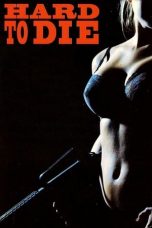- Source: East Side West Side (TV series)
East side" target="_blank">Side/West side" target="_blank">Side is an American drama series starring George C. Scott, Elizabeth Wilson, Cicely Tyson, and, later on, Linden Chiles. The series aired for one season (1963–1964), and was shown Monday nights on CBS.
Set in New York City, the show explored issues of urban life, some of them grim. Though it won critical praise, it also generated some controversy. TV Guide ranked it #6 on their 2013 list of 60 shows that were "Cancelled Too Soon".
Synopsis
The series centers on Scott in the role of Neil Brock, a New York City social worker who works for the private agency Community Welfare Service, with his secretary, Jane Foster, played by actress Cicely Tyson (this was the first time an African-American starred in a television drama). Episodes of East side" target="_blank">Side/West side" target="_blank">Side addressed topics relevant to the inner city, with many controversial issues explored. A typical example came in the first two episodes, when Brock investigated a prostitute and her child ("The Sinner"), followed by a story involving statutory rape (“Age of Consent”).
In an effort to tackle issues effectively, Brock resigned from his job during the latter portion of the 1963–64 season to work for a New York congressman, Charles W. Hanson (Chiles). The characters played by Elizabeth Wilson and Cicely Tyson soon disappeared, and Barbara Feldon was introduced as Brock's girlfriend for one episode.
Despite the high quality of both the writing and acting, the show's tendency of addressing sensitive topics forced many potential advertisers to avoid sponsorship of the show, while a number of television stations affiliated with CBS across the country also chose not to air the program for their local viewers. It was reported that CBS programming chief James Aubrey clashed with Scott over the direction of the show, also a factor in its cancellation.
The December 23, 1963 episode, "Creeps Live Here," was originally scheduled to be broadcast on November 25, but was postponed as CBS concluded their four-day live coverage of the John F. Kennedy assassination.
East side" target="_blank">Side/West side" target="_blank">Side ran on Monday evenings at 10 PM, opposite ABC's medical drama about psychiatry, Breaking Point and NBC's Sing Along with Mitch starring Mitch Miller. The show's executive producer, David Susskind, began a letter-writing campaign to government officials, newspaper editors, and other prominent individuals to gain support for renewal of the series. However, the effort failed when the show was cancelled on January 28.
Cast
George C. Scott as Neil Brock
Linden Chiles as Congressman Charles Hanson (Episodes 19–26)
John McMartin as Mike Miller (Episodes 19–26)
Cicely Tyson as Jane Foster (Episodes 1–22)
Elizabeth Wilson as Frieda Hechlinger (Episodes 1–22)
Conception and development
East side" target="_blank">Side/West side" target="_blank">Side started as a vehicle for George C. Scott, who had recently gained prominence after acclaimed theatrical performances and a series of important films. On January 3, 1962, CBS and United Artists announced that they were beginning preparations for an hour-long drama starring Scott, to be launched during the 1963-1964 season.
Scott did not like the idea of the show being prepared for him and threatened to abrogate his agreement with CBS. The president of CBS, James Aubrey, introduced Scott to an independent producer David Susskind, who turned to his friend Robert Alan Aurthur, a talented television playwright, for a screenplay conception. Aurthur offered an unproduced script, My Three Angels, centered around a trio of inner-city social workers, and rewrote the script to fit Scott. Aurthur renamed the project East side" target="_blank">Side/West side" target="_blank">Side, a reference to the two halves of upper Manhattan as bisected by Central Park. The main protagonist was Neil Brock, played by Scott — a tough, impatient, temperamental case worker. With the approval of Aubrey and his newest television star, David Susskind began production on Aurthur’s pilot script, a story about a teen gang killer and his path through the legal system, now called It’s War, Man.
The central location of the series was the Community Welfare Service (CWS), a private agency that served as home base for three social workers dedicated to solving the daily problems, major and minor, of the residents of an impoverished Manhattan neighborhood. According to George C. Scott, the setting was chosen deliberately to get his character out of the office and maximize the audience’s exposure to the real streets of New York.
In November 1962, Susskind attended a meeting of the New York City Social Work Recruiting Committee and announced his plans to create a television series focusing on the social work profession. He and his staff were provided with appropriate literature from the Committee, which they used to discuss story ideas and scripts. In January 1963, Bertram Beck, Executive Director of the National Association of Social Workers (NASW), informed his organization of Susskind's interest in producing a show about social workers and requested that his subordinates send story ideas to the producer. Beck served as consultant and technical adviser for the series, reading the scripts, making editorial comments and changes, and handling much of the mail from social workers who wrote to NASW about the series.
"It's War, Man" resembled an episode of the contemporary courtroom procedural series The Defenders and gave little indication of the shocking, socially conscious show that East side" target="_blank">Side/West side" target="_blank">Side would become.
Social context
During the 1950s, the Eisenhower Administration accepted the doctrine that "economic growth would itself, by diffusing prosperity, reduce inequalities and resolve social problems. The progressive tax structure, expanded welfare services, mass public education, and the G.I. Bill all served the twin aims of economic growth and income redistribution". However, by the mid 50s, some disputed whether economic growth alone was distributing such benefits as expected.
In 1962, Michael Harrington, in The Other America, exposed the misery and deprivation of a "new" poor. This group, consisting of the sick, disabled, elderly, minorities of color, and members of female-headed families, had not, Harrington argued, benefited from post-World War prosperity. In January 1963, Dwight Macdonald provided an exhaustive summary of previous studies on poverty in an important article entitled "Our Invisible Poor" in The New Yorker magazine. He asserted that mass poverty persisted, and that it was one of two grave social problems, the other being the structural relationship of poverty to race. He concluded that the federal government was the only force that could reduce poverty and make the lives of the poor more bearable. Between 1961 and 1964, federal grants were provided to public and private community agencies to combat the problems of the "new poor" through the improvement of educational facilities, youth programs, and other programs to improve the physical and social well-being of the poor.
John F. Kennedy's 1960 presidential campaign increased the public's consciousness about poverty. Once elected, he established the President's Committee on Juvenile Delinquency and Youth Crime, which sponsored employment programs, manpower training, remedial education, anti-discrimination campaigns, and neighborhood development centers in several cities. The Area Redevelopment Act, passed in 1961, provided Federal dollars to improve public facilities, and to provide technical assistance and retraining in certain regions of the country, particularly Appalachia. In 1962, Congress also enacted the Manpower Development and Training Act. The reform efforts of the late 1950s and early 1960s culminated in the War on Poverty, initiated by the administration of Lyndon B. Johnson.
An episode of "East side" target="_blank">Side/West side" target="_blank">Side" on an African American couple in Harlem was blacked out by CBS affiliates in Shreveport, Louisiana, and Atlanta, Georgia, primarily for racial reasons.
Episodes
Awards and nominations
In 1964, the series received eight Emmy Award nominations, including one win for Outstanding Directorial Achievement awarded to Tom Gries for the controversial November 4, 1963 episode entitled, "Who Do You Kill?". The episode, which also received a writing nomination and acting nominations for supporting actors James Earl Jones and Diana Sands, explored the aftermath of a child's death from a rat bite in a Harlem slum.
References
External links
East side" target="_blank">Side West side" target="_blank">Side at IMDb
East side" target="_blank">Side West side" target="_blank">Side at epguides.com
Kata Kunci Pencarian:
- Mr. Wise Guy
- Gossip Girl
- Mr. Muggs Steps Out
- Kid Dynamite (film)
- James Mason
- Alan Arkin
- Grand Theft Auto: San Andreas
- Indonesia
- Agatha Christie
- Kim Seon-ho
- East Side West Side (TV series)
- West Side Story
- Upper East Side
- Lower East Side
- East Side, West Side
- EastSiders
- Upper West Side
- Lower West Side, Chicago
- Only Side by Side with You
- West Side Story (disambiguation)
Eastern Bandits (2012)
Hard to Die
X-Men (2000)
No More Posts Available.
No more pages to load.














